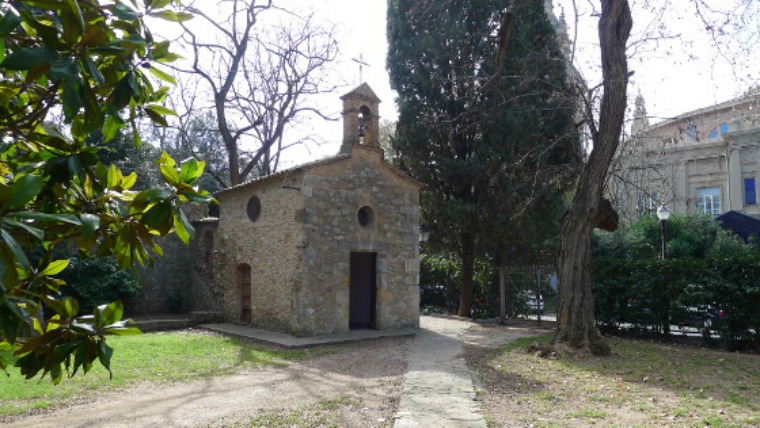Saint Madrona, forgotten in Barcelona, but ever-present in Poble-sec
In medieval times, people asked for the protection of a saint against any ill, and that is why they were declared patron saints. Barcelona had as many as three patron saints. Two of them are still well-known today, the Mare de Déu de la Mercè [Our Lady of the Mercè] and St. Eulàlia. The third patron saint used to be just as popular, but she has now been largely forgotten. This is Saint Madrona, who’s saint’s day is 15 March. But she hasn’t been forgotten everywhere in the city. There are two churches dedicated to her in Poble-sec, and a festival is held for her in the spring.
St Madrona, like St Sever, St Pacià and St Eulàlia, is considered to be from Barcelona, but as with the latter, her existence is thought to be more legendary than real. Even so, there is no doubt about the great devotion the city felt for her. According to tradition, compiled by the folklorist Joan Amades and others, Madrona was born in a Roman village in the Montjuïc area. When she became an orphan, she went to live with her uncle in Greece. Other versions say that she wasn’t an orphan and that she went to be a maid. In any event, they say she died a martyr in Thessalonica. Some time after her death, some French merchants bought her body as a business venture and sent it by ship to Marseilles. A bad storm forced them to seek shelter in the port of Barcelona, but every time they tried to leave, a new storm began. It became clear that the saint wished to remain in her home city.
The saint’s body was deposited in the chapel of Sant Fruitós in Montjuïc. Some authors maintain that this church, which is no longer present, eventually became dedicated to the saint. Whatever really occurred, there was a chapel in Montjuïc dating back to 1403, which passed through the hands of various religious orders: Capuchins, Franciscans, Servites, Friars Minor Capuchins… Given that it was located near the castle in Montjuïc, on more than one occasion it found itself on the front line of a battle. A little higher up, there was the Convent of Saint Madrona, which lent its name to one of the battles during the 1714 siege, the Battle of the St Madrona Convent. No trace remains of that building. Only the old chapel dating back to 1754 remains, inside the Joan Maragall gardens.
The chapel’s location at such a strategic military point made it necessary to move the saint’s body on various occasions. Over time, apart from her own church in Montjuïc, the relics have been in the Cathedral, in Sant Pau del Camp, in the Capuchin convent that used to stand in the present day Plaça Reial, and finally in the present day Santa Madrona Church, on Carrer de les Tapioles in Poble-sec. The relics disappeared when the church was burnt down during the Tragic Week in 1909. Even so, a believer later donated a small relic of the saint to the church, which has been venerated ever since.
Júlia Costa, from the Poble Sec Historical Research Centre (CERHISEC), explains that St Madrona ‘provides protection against malign fevers, she protects sailors, she can bring rain and she solves difficult problems’. Her ability to provide rain may explain why many of the drier parts of Catalonia venerate her and why she was patron saint of the horticulturists at the altar of the Basilica of Santa Maria del Pi.
The scale of devotion to St Madrona is shown by the fact that, as Júlia Costa explains, ‘in 1563, her Day of Obligation was declared, and one year later she was declared co-patron saint by popular vote”. The folklorist Joan Amades states that: ‘When the city suffered a drought, a procession was organised from the Cathedral to the chapel, passing through the Sant Antoni gate. The saint’s body was taken to the Cathedral under a canopy and then returned to her chapel.’ The folklorist also affirms that many women made a vow to dress as pilgrims on Santa Madrona’s Day and that ‘crowds of women were seen on the city’s streets dressed in long tunics, capes and wide-brimmed hats, with a pumpkin hanging from a long shepherd’s crook, a long rope around their body and various scallop shells sewn on their clothing. One of the city gates that was often used during processions also bore the name of the saint, and that section of the city wall still exists at Drassanes.
Nowadays, every fourth Sunday after Easter, Poble-sec celebrates the Santa Madrona festival, with a procession, religious ceremonies and a visit to the chapel dedicated to the saint.
- Article originally published in Barcelona Blog





